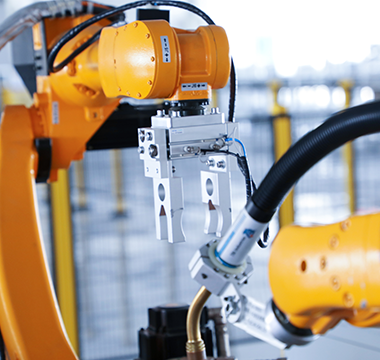

Human beings created production tools in the practice of labor, and some of the earliest invented simple tools later evolved into simple machines, including cleats, slants, spirals, levers and pulleys. Simple machines and their mechanical principles were discussed in the Book of Mo-Jing (The Book of Mo-Jing) written in the Warring States Period of China and in the works of Archimedes in ancient Greece.
Mechanical benefits At first, people apply simple machinery mainly for the purpose of mechanical benefits, that is, a small force to obtain a large force, or known as the increase of force. If the driving force applied to the machine is the input force, and the force obtained from the machine is the output force, the mechanical benefit is defined as the ratio of the output force to the input force. In addition to being able to change the magnitude of the force, simple machines are sometimes used to change the direction of the force or the position of the point of action. In addition, simple machines are sometimes used to increase displacement. For example, a pointer to a meter, tweezers, etc., in which case the input force is greater than the output force.
Simple machines to work in a static or low speed motion state, analyzes its principle of work, can the application of force and moment equilibrium conditions for the relation between input force and output force, this simple machines are contained in the formula of the geometric parameters, such as splitting wedge Angle, slope Angle and screw thread Angle, lever fulcrum to force point distance and roller radius, etc. If the geometrical parameters of a simple machine are changed according to this relation, the small (or large) input force can be balanced with the large (or small) output force.
Principle of mechanical work When a simple machine works, its motion can be divided into translation and rotation. For these two different forms of motion, different methods can be used to calculate the work done by a force. The product of the magnitude of the force and the distance the point of action moves along the direction of the line of force is calculated. The product of the magnitude of the torque and the rotation Angle around the torque axis is used to calculate the rotation. In general, the positive work done by the input force is called input work. The negative work done by the output force is called output work. When a simple machine is in equilibrium, the algebraic sum of the input work and the output work is zero, or the input work and the output work are equal in magnitude. This is called the principle of mechanical work. This shows that although simple machines can save effort, they cannot save work. The input force is small, but the moving distance of the action point is large. The output force is large, but the moving distance of the action point is small. The so-called "golden law" of mechanics: "Gain by force, lose by speed." As early as the 16th century, when Galileo studied the balance of heavy objects on inclined planes, he discovered that this was the principle of mechanical work that had been derived from practice.
The work consumed by friction (see friction) should be taken into account when studying simple machines such as slopes and spirals. The mechanical work principle is then expressed as the algebraic sum of the work consumed by the input work, output work and friction is zero. The value of output work is less than the value of input work. The ratio of output work to input work is called mechanical efficiency. With friction, the mechanical efficiency is always less than 1.
Application of Simple Machinery Although simple machinery is very old, but it is still widely used in a variety of modern machinery and instruments. Simple machines of various forms or evolutions can be found in many machines. One of the typical examples is the spiral loading device in the material strength testing machine, the wedge clamping device, the recording device composed of lever and pulley, etc. The handlebars in metal cutting machine tools are mostly evolved from levers, the clamping devices are mostly evolved from cleats and inclined planes, and the lead screws are the direct application of helices. Bevels and spirals are more commonly used in material transport and lifting devices and equipment. These examples show that simple machinery is one of the foundations of modern machinery.
imple machinery is very old, but it is still widely used in a variety of modern machinery and instruments. Simple machines of various forms or evolutions can be found in many machines. One of the typical examples is the spiral loading device in the material strength testing machine, the wedge clamping device, the recording device composed of lever and pulley, etc. The handlebars in metal cutting machine tools are mostly evolved from levers, the clamping devices are mostly evolved from cleats and inclined planes, and the lead screws are the direct application of helices. Bevels and spirals are more commonly used in material transport and lifting devices and equipment. These examples show that simple machinery is one of the foundations of modern machinery.